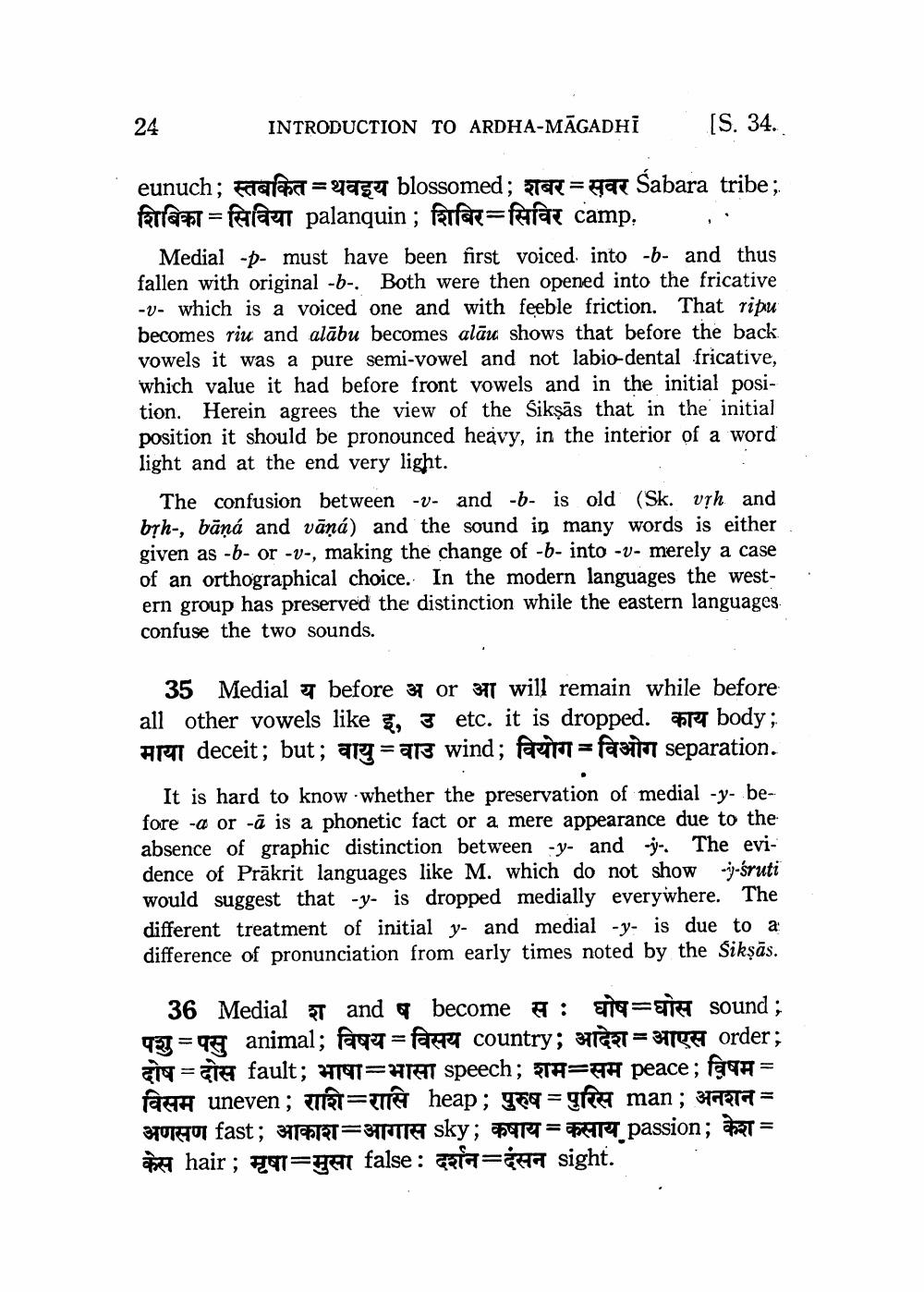________________
24
INTRODUCTION TO ARDHA-MĀGADHI
(S. 34.
eunuch; स्तबकित =थवइय blossomed; शबर =सवर Sabara tribe; Parlat = falaren palanquin; farfare=fefae camp:
Medial -D- must have been first voiced into -b- and thus fallen with original -b-. Both were then opened into the fricative -V- which is a voiced one and with feeble friction. That ripu becomes riu and alābu becomes alāu shows that before the back vowels it was a pure semi-vowel and not labio-dental fricative, which value it had before front vowels and in the initial position. Herein agrees the view of the Sikşās that in the initial position it should be pronounced heavy, in the interior of a word light and at the end very light.
The confusion between -v- and -b- is old (Sk. vrh and byh-, bāná and vāná) and the sound in many words is either given as -b- or -V-, making the change of -b- into -v- merely a case of an orthographical choice. In the modern languages the western group has preserved the distinction while the eastern languages. confuse the two sounds.
35 Medial J before 37 or 371 will remain while before all other vowels like s, etc. it is dropped. para body; माया deceit; but; वायु = वाउ wind; वियोग-विओग separation.
It is hard to know whether the preservation of medial -y-before -a or -ā is a phonetic fact or a mere appearance due to the absence of graphic distinction between-y- and -y.. The evidence of Prākrit languages like M. which do not show -j-śruti would suggest that -y- is dropped medially everywhere. The different treatment of initial y- and medial -y- is due to a difference of pronunciation from early times noted by the Sikşās.
36 Medial श and ष become स: घोष-घोस sound ; TET="e animal; fera = fare et country; 1927 = 31187 order;
= fault; HTT=HTYT Speech; TH= peace; f = fach uneven ; Q =uê heap; 969=gree man; BARTA =
porqu fast; 31747T=STTRA sky; p = fire passion; a = ponty hair ; 79=ga false : qa=9 sight.




